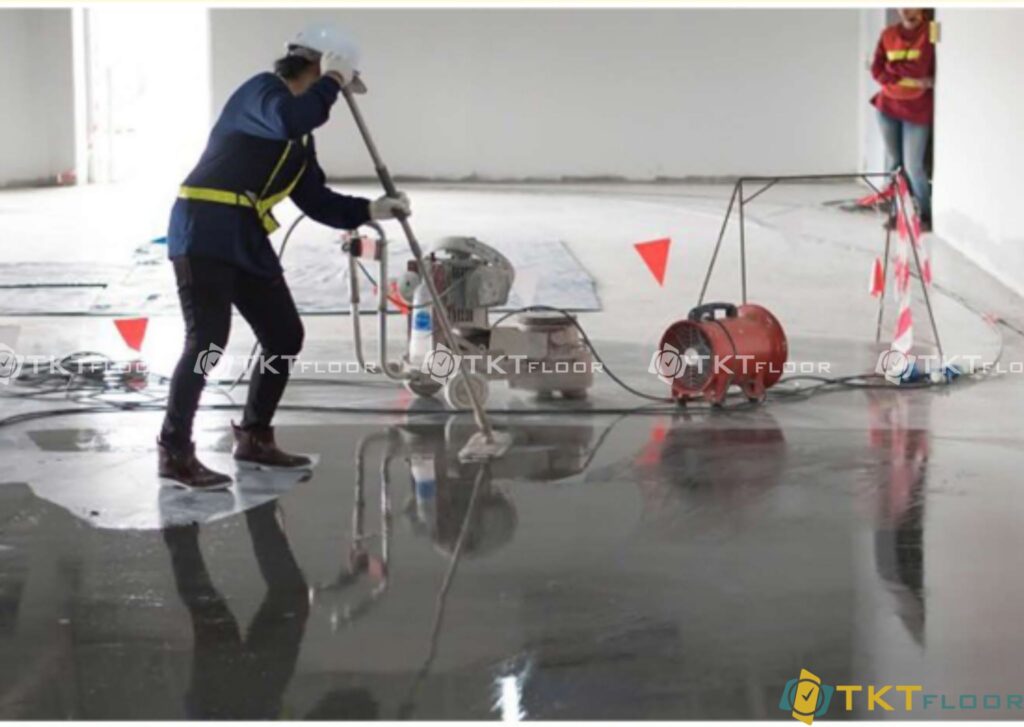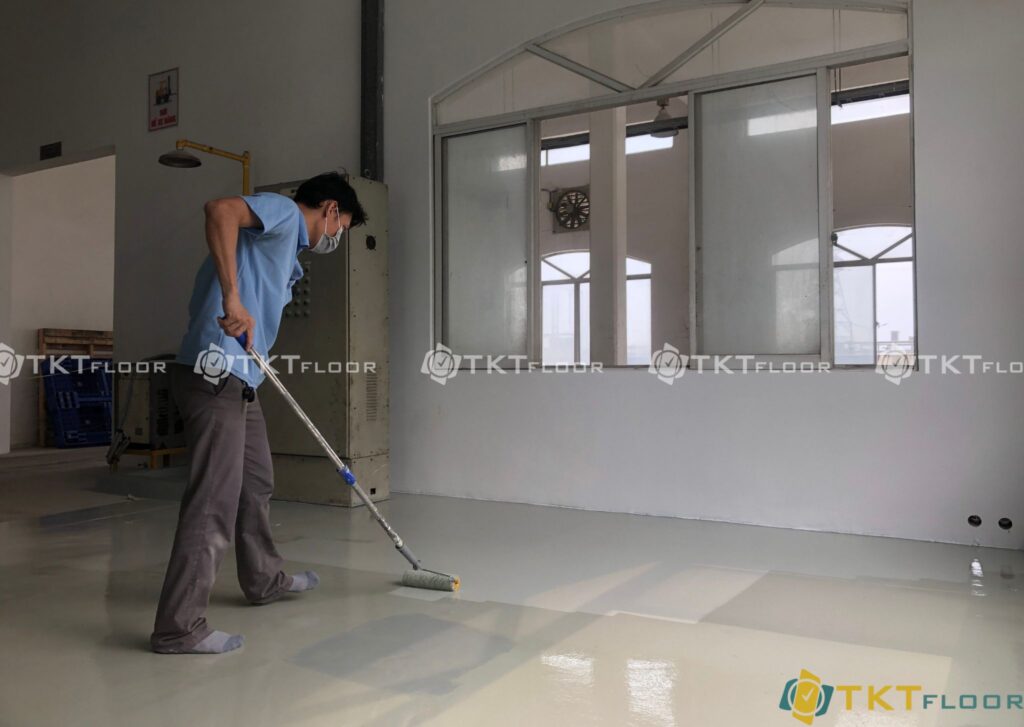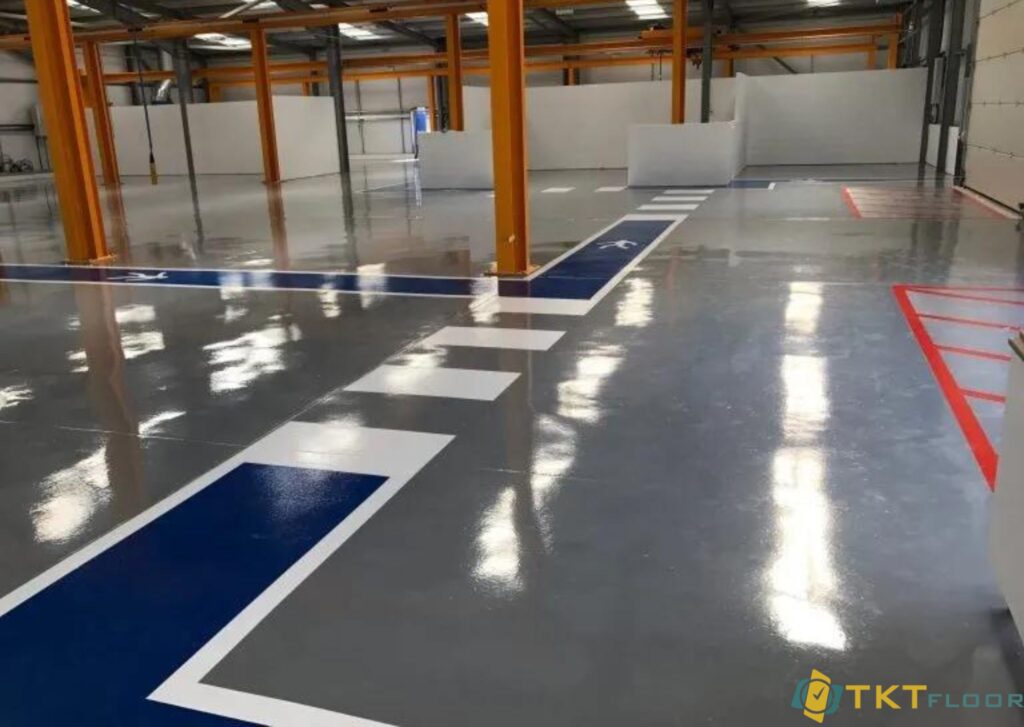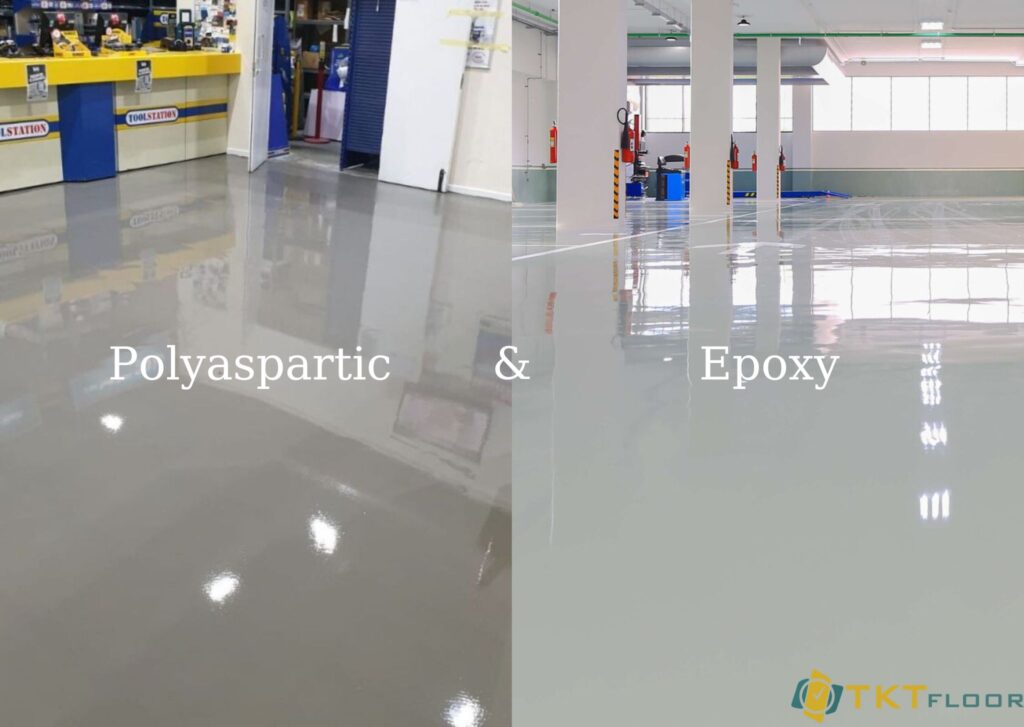
Why terrazzo countertop is good choice
08/09/2021
WHY SHOULD YOU USE POLYASPARTIC POLYUREA
02/16/2023???? Last updated article “Discover the comparison of polyaspartic and epoxy” on February 16, 2023 at TKT Floor Solutions Company in Ho Chi Minh City
When it comes to choosing the best floor coverings one usually immediately thinks of polyaspartic and epoxy. These two types of coatings both have their own properties and advantages and disadvantages. Ultimately, the best choice for your flooring surface will depend on your specific needs and preferences.
This TKT Floor article will give you a brief overview of each type of floor covering. We will learn the polyaspartic vs epoxy comparison in terms of durability, drying time, do-it-yourself installation, anti-slip properties, UV stability and curing time of each type of coating to help you make the most perfect decision
1. What is Epoxy Coating?
Epoxy coatings are a two-part system consisting of resins and hardeners. When mixed together, they form a strong, durable and chemically resistant surface. It can withstand heavy traffic and people. Epoxy coatings are also stain-resistant and they can improve the overall appearance of your floor.
2. What is Polyaspartic Coating?
Polyaspartic coatings are a relatively new type of floor covering that is similar to epoxy in many ways. It is also a two-part system consisting of plastics and hardeners. However, polyaspartic coatings dry much faster than epoxy and can be walked within just a few hours of application. They are also UV resistant, making them a good choice for outdoor areas.
3. Comparison of polyaspartic and epoxy in terms of construction
3.1 How to apply Polyaspartic coating
- The first steps to applying a polyaspartic coating are the same as for epoxy or some other type of floor covering. Your floor surface needs to be clean and dry. At the same time it also needs to be sanded so that the coating adheres tightly to the concrete.
- To begin with, we will pour the coating on the floor and use a rubber broom or roller to spread it evenly. Since polyaspartic dries quickly, you will need faster operation. At the same time avoid unnecessary trouble. Due to the limited drying time, delays in the construction process can lead to the drying of polyaspartic in the barrel. This will waste your materials and time.
- In about an hour or less, your first coating will dry. Apply the second layer and include your favorite non-slip traction material such as colored flakes or beads.
- Unlike epoxy, the application of polyaspartic coatings will be very fast. Once completed, your floor will be ready for use in 24 hours.

3.2 How to apply Epoxy coating
- Epoxy floor coatings are usually applied on an additional primer, which requires a long maintenance period. The primer permeates your concrete and helps provide a more stable base for the epoxy coating to adhere to.
- After the primer dries, mix the mixture of epoxy resin and hardener together.
- Spread the epoxy mixture evenly on the floor surface and then level it with a floor brush or roller. Use a bristle brush to paint the edges of the floor.
- After the first coat of paint dries, apply the second layer and let it stand for 5-7 days before using the floor to avoid sticking the paint.
- Due to its longer service life, epoxy resin will not dry out in a bucket while you are constructing. The first coating will take about 16 hours to dry if at medium temperature. Lower temperatures can increase this time up to 24 hours for drying.
- Drying time may vary depending on your region’s climate. Let your new epoxy flooring dry completely for about 1 – 2 weeks before doing any work that could scratch the floor.

4. Comparison of Polyaspartic vs Epoxy:
Now, we will look at a detailed comparison of the salient characteristics between the two types of polyaspartic and epoxy floor coverings.
Durability
When it comes to durability, both epoxy and polyaspartic are known for their long-lasting properties. Epoxy is known for its resistance to chemicals and impacts. It becomes an excellent choice for garages that are frequently used for heavy projects. Polyaspartic, on the other hand, is known for its superior wear resistance. Makes it a great choice for areas with a lot of people passing by.
Drying time
In terms of drying time, epoxy is known to take longer to process than polyaspartic. Epoxy usually takes 24-48 hours to dry completely. While polyaspartic can continue for at least 4 hours and dry completely in 24 hours. This can be a major consideration if you are looking to use your garage as soon as possible after the coating is applied.
UV protection
The epoxy finish will gradually decompose the polymer with prolonged exposure to sunlight and ultraviolet rays. This will lead to yellowing, fading and loss of the original “shine” over time. Polyaspartics are more stable with ultraviolet light. That means they will retain the original characteristics and properties of the floor surface year by year. Both epoxy and polyaspartic are stable with ultraviolet light. Which means they won’t fade or yellow over time. However, polyaspartic is known for its superior UV resistance. Making it a better choice for floor surfaces
Floor cleaning
Both polyaspartic and epoxy are resistant to chemicals and moisture. At the same time, it is much more flexible in terms of cleaning capabilities, making it easy to maintain over time. Dusting regularly and treating spills will be all you need to do. This keeps your flooring looking like new on the day of installation from time to time.
Floor quality
Polyaspartics were originally most widely used in commercial locations because of their durability and quality over time. As technology has improved and become more widely available over time. They are the superior choice when choosing flooring due to their long-lasting granite-like quality. Because it must be professionally installed. The end result after construction is usually a smoother, flatter finish than epoxy flooring. We can even install polyaspartic on existing epoxy finishes.

Link to the floor surface
Many homeowners with epoxy floors choose to use rubber mats in car parking spaces to avoid burning tires. Especially in hotter temperatures in summer, epoxy floors can peel off over time as tires run. Epoxy usually forms best in more tightly controlled environments such as indoor galleries without much exposure to sunlight. Polyaspartic is chemically bonded to concrete and prevents hot tire peeling.
Floor construction time
Our polyaspartic flooring installation takes a day to install and several hours to maintain. While many epoxy floors take days to install and can take up to four days to maintain. In addition, epoxy is more susceptible to weather changes during installation. While polyaspartic can be applied in a much wider temperature range. This means that we can install your polyaspartic flooring all year round.
Temperature adaptation
Floor coverings will help protect the floor from risks such as cracking, unevenness, and displacement over time due to changing ambient temperatures. Epoxy can shift, expand and contract due to changes in external temperature. Polyaspartic can withstand those changes because it binds directly to concrete. It means that both the visual appeal and the operational features will be maintained for many years.
Air quality
When it comes to air quality, polyaspartic is clearly the winner. Epoxy has a strong odor during curing, which can be irritating to some people. Polyaspartic, on the other hand, has a low content of VOCs (volatile organic compounds). As such it becomes a much more environmentally friendly option.
Anti-slip properties
Both epoxy and polyaspartic provide a non-slip surface. But epoxy has a slightly coarser texture that gives better traction. This can be an important consideration if you’re looking for additional safety in your garage.
Cost
When comparing prices between two different floor paint options. We can see the difference clearly. Epoxy floor coverings are significantly cheaper than polyaspartic. While polyaspartic may be more expensive, this is for good reason. Because Polyaspartic Floor Coatings give homeowners an economical, long-lasting choice in the long run. It gives them the most benefits for their investment and lasts for years to come. Epoxy floor coverings can give a short-term look rather than a floor surface that is aesthetically pleasing and cost-effective in the long run.
5. Conclusions
So to answer the question should you choose polyaspartic and epoxy? The final answer depends on your specific needs and preferences. If you are looking for a durable garage floor coating that is easy to apply and dries quickly, then polyaspartic is the right choice. On the other hand, if you’re looking for a coating that offers greater safety and better traction, epoxy may be a better choice.
In conclusion, both polyaspartic and epoxy have their own distinctive characteristics. Before making a decision, it’s important to consider your specific needs and interests. Whether you choose polyaspartic and epoxy, you can rest assured that your floor surface will be protected and look great for years to come.

6. You may be interested
- Learn about Polyaspartic polyurea floor coverings: https://13.215.255.106/tim-hieu-ve-lop-phu-san-polyaspartic-polyurea/
- Why use Polyaspartic polyurea: https://13.215.255.106/tai-sao-nen-su-dung-polyaspartic-polyurea/
- Learn how to apply self-leveling epoxy paint: https://13.215.255.106/tim-hieu-thi-cong-son-epoxy-tu-san-phang/
- Learn how to apply self-leveling epoxy paint: https://13.215.255.106/tim-hieu-thi-cong-son-epoxy-tu-san-phang/
- Epoxy paint floor peeling method: https://13.215.255.106/phuong-phap-boc-son-san-epoxy/
- 5 common mistakes when applying Epoxy floor paint: https://13.215.255.106/5-loi-khi-thi-cong-son-san-epoxy/
- What is Epoxy Paint? Details of Epoxy paints: https://13.215.255.106/son-epoxy/
- Epoxy floor paint construction – Standard process: https://13.215.255.106/thi-cong-son-san-epoxy/
TKT Floor Industrial Floor Solution Company
???? Mobile phone number: 09.05.356.285
☎️ Landline number: 028.66.830.930 – 028.66.830.931
???? Email: tktfloor@gmail.com – Website: https://13.215.255.106/
???? Youtube: https://www.youtube.com/channel/UC8_fgvlxqKdGG57pNPjpnyw
???? Fanpage: https://www.facebook.com/tktfloor/
???? Address: No. 9, Street 28, Binh Trung Tay Ward, District 2, Ho Chi Minh City.
Call Us – 100% Free – 100% Satisfied

Source: TKT Floor Hard Floor Solution







